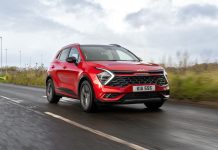LONDON, 2023 – VEV, the e-fleet solutions provider backed by Vitol – a world leader in energy – says the change from traditional fuel cards to data-powered fleet dashboards is as significant for the fleet sector as the shift from cash to contactless was for the payments industry.
The company is highlighting that having real-time fleet and energy data management technology is the critical component to run a successful EV fleet. They are encouraging fleets to embrace this operational shift to reap the rewards of fleet decarbonisation.
Moving from the tried-and-trusted fuel card to an integrated software solution encompassing energy, vehicles, chargers and operations, and potentially micro-grid solutions, is significant. It’s a radical change in the role of a fleet manager who will still be managing vehicles, drivers and journeys, but now doing so within the parameters of energy supply and charging schedules.
VEV CEO Mike Nakrani said:
“Fleet emissions make up 10% of the UK’s total carbon emissions, so electrifying your fleet is non-negotiable. As a brand new and complex undertaking, bringing in expertise to anticipate and resolve the inevitable challenges will prove to be a good investment. Done right, electrification can reduce costs while bolstering sustainability credentials and providing access to low-carbon contracts. Fleet owners need to start planning now, upskilling teams, and approaching this as a major business transformation. The fleets that act early will gain a competitive edge.”
To help fleet managers planning to electrify, VEV has outlined its top five factors to plan a smooth transition.
- ADOPT A NEW DATA-DRIVEN MINDSET – Real-time energy monitoring, charging schedules, and new efficiency metrics require a new data-centred approach. Data insights are needed at the very start of the planning stage to assess current telematics and energy consumption and design the EV fleet. Every EV fleet is bespoke in its configuration and there isn’t a one-size fits all solution.
- OUTSOURCE EXPERTISE – By working with an e-fleet expert, fleets will access a team that has managed this process multiple times before. This means anticipating challenges and avoiding mistakes, which will reap the benefits of the energy transition faster and more cost-effectively. VEV has put together a free eBook with advice for fleet managers looking to electrify their fleets here.
- IT’S A TRANSITION, NOT A QUICK FIX – It’s important to look at the transition to electrification as exactly that – a transition – it’s not an on or off switch. It’s crucial to analyse your data to assess your electrification readiness at the outset and then design the implementation plan around the right mix of vehicles and chargers for each fleet operation.
- MANAGE YOUR ENERGY SUPPLY – Determining the likely impact on your grid connection upgrade is arguably the critical success factor in every transition. Upfront energy analysis and developing alternative energy sources such as solar and battery, can help avoid or reduce grid upgrades which is one of the most expensive and time-consuming parts of the electrification transition.
- NAVIGATE MULTIPLE STAKEHOLDERS – Due to the complexity of transition, many more stakeholders need to become part of the process, from finance through to facilities and the drivers themselves. The transition is seen as the fleet manager’s obligation when it is not solely their responsibility, but it is usually their problem.
VEV’s sister company VGMobility, designed, built and financed the electrification of 400+ buses for Transmilenio, a network of 10,000 public buses in Bogotá, Colombia.
Mike Nakrani said, “This included building a state-of-the-art depot facility, supplying over 400 electric buses and 21 super chargers of 360kW. By fully financing the project over 15 years, VGM enabled Transmilenio to electrify without a heavy upfront capital burden. At VEV, we’re currently getting a lot of interest in our managed service offering which transfers the financial commitment from capex to opex.”
For media inquiries or further information, please contact Media@vev.com.








































